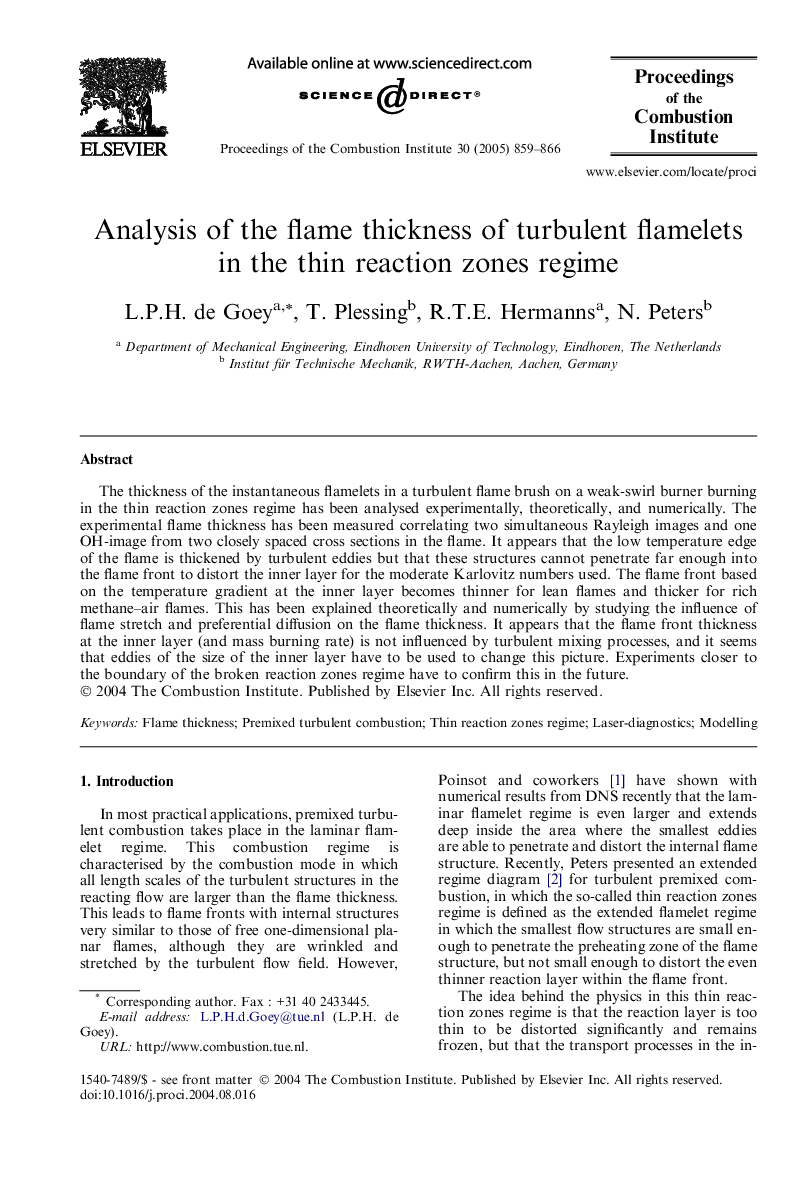| Article ID | Journal | Published Year | Pages | File Type |
|---|---|---|---|---|
| 9637412 | Proceedings of the Combustion Institute | 2005 | 8 Pages |
Abstract
The thickness of the instantaneous flamelets in a turbulent flame brush on a weak-swirl burner burning in the thin reaction zones regime has been analysed experimentally, theoretically, and numerically. The experimental flame thickness has been measured correlating two simultaneous Rayleigh images and one OH-image from two closely spaced cross sections in the flame. It appears that the low temperature edge of the flame is thickened by turbulent eddies but that these structures cannot penetrate far enough into the flame front to distort the inner layer for the moderate Karlovitz numbers used. The flame front based on the temperature gradient at the inner layer becomes thinner for lean flames and thicker for rich methane-air flames. This has been explained theoretically and numerically by studying the influence of flame stretch and preferential diffusion on the flame thickness. It appears that the flame front thickness at the inner layer (and mass burning rate) is not influenced by turbulent mixing processes, and it seems that eddies of the size of the inner layer have to be used to change this picture. Experiments closer to the boundary of the broken reaction zones regime have to confirm this in the future.
Related Topics
Physical Sciences and Engineering
Chemical Engineering
Chemical Engineering (General)
Authors
L.P.H. de Goey, T. Plessing, R.T.E. Hermanns, N. Peters,
